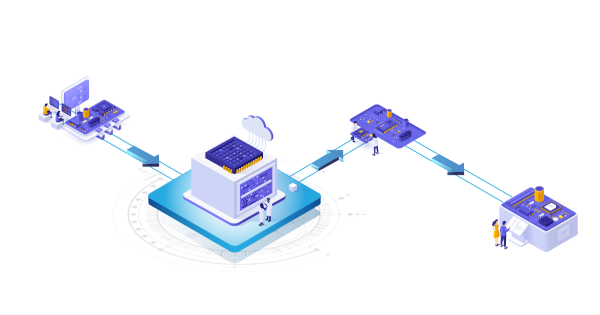Semiconductors are ubiquitous. They manage and control current flow in electronic devices and equipment, and are typically made from silicon, germanium, or other pure elements. Silicon is the most widely used material in semiconductor manufacturing, with Gallium arsenide a close second.
Semiconductors are responsible for nearly every aspect of our daily lives, being used widely in laser diodes, solar cells, microwave-frequency integrated circuits, and many other applications. They are the unsung heroes of the technology world, appearing in all technological applications known to humankind, including devices like smartphones, automobiles, and CCTV cameras, to name a few.
Starting from the early 19th century, scientists such as Thomas Johann Seebeck and Michael Faraday conducted early experiments that would lead to the development of the first semiconductors. Following on from the subsequent work of Alexandre Becquerel, Peter Rosenschold, and Willoughby Smith, it would be Karl Ferdinand Braun who would develop the crystal detector in 1874, the first known semiconductor device.
With rapid advancements in design, semiconductor implementation has resulted in faster, more economical, and more efficient machines. Today’s modern semiconductors offer quite a few advantages.
For starters, they are lightweight and inexpensive. Because they can be integrated into a variety of appliances, this increases dependability.
Secondly, they are long-lasting and require less energy, making them an ideal material for a wide range of applications in a variety of products.
Semiconductors are the foundation and framework of technology, and they are unquestionably the foundation for our present and future breakthroughs. From aerospace and consumer electronics to energy and medicine, semiconductors have made an indelible mark everywhere.
Some of the areas where semiconductors have seen significant growth are:
Healthcare: Next-generation hospitals and healthcare providers employ cutting-edge technology. Robotics are used to assist in complicated surgeries. Telehealth makes it easier to communicate with patients and diagnose symptoms. These devices are only possible because of semiconductors, which aid in the direction of power, sensors, temperatures, pressures, calculations, and a variety of other functions.
5G: When implemented fully, 5G will allow for faster information flow and processing. 5G’s new specifications will need to be met by pathbreaking semiconductor design. It does show significant promise; the global 5G chipset market is expected to reach USD 90.79 billion by 2030, growing at a CAGR of 44.95% between 2020 and 2030.
Artificial Intelligence (AI): As a result of widespread adoption of AI technologies, many businesses are strategizing and developing AI-integrated semiconductor chips. These have numerous advantages across industries, including lower operational costs, improved performance, and increased manufacturing speed. The global AI chip market will reach USD 304.09 billion by 2030, growing at a CAGR of 29.9% between 2022 and 2030.
In 2021, the semiconductor industry saw its second consecutive year of record growth, reaching $527.88 billion. The global semiconductor chip industry is expected to reach around US$600 billion in 2022 if it continues to grow at its current rate.
Silicon shipments set new records as demand for silicon remained high to support the wide range of semiconductor devices required for the modern digital economy. The global semiconductor market is expected to grow at a CAGR of 12.2% between 2022 and 2029, from $600 billion to $1,380.79 billion.
As we have mentioned before, the four major components of semiconductors are very large-scale software integration (VLSI), system design, platform software and middleware, and validation. They work together to build a robust system that produces an efficient and powerful semiconductor. Here, we talk about system design in particular.
System design is an essential component of semiconductor development. From the data center to the network edge, current and emerging applications necessitate high-performance and high-efficiency hardware implementations. Creating a comprehensive and integrated system design process aids in the identification of appropriate solutions and remedies to potential challenges.
In the semiconductor paradigm, system design encompasses the following functional areas:
- Hardware platform design
- Radio frequency design
- Mechanical design
- Testing and validation
- Platform software design
- Field programmable gate array (FPGA) design and validation
Across the above areas, the primary goal of system design is to ensure optimal processing across the creation and testing of chips.
From a system design perspective, LTTS works with system and hardware components to deliver reference board designs, development platforms, evaluation boards, validation boards/load boards/tester cards, design analysis, and library management. LTTS has state-of-the-art laboratories equipped with cutting-edge capabilities and comes with years of expertise in:
- Board design
- Proto manufacturing
- FPGA design and validation
- SI/PI analysis
- Pre-certification (EMI/EMC, RF, thermal)
- Component engineering
Semiconductors enable future technologies, such as quantum computing and advanced wireless networks. They will inevitably become smaller, more efficient, and more powerful over time, allowing them to be integrated into more technologically advanced devices. The semiconductor industry's future is one of expansion and growth, making a better future possible for all.
LTTS has enabled several successes in the semiconductor domain with its expertise in system design. Click here to discover how LTTS delivered value in a critical engagement for one of its clients.
Check out Part III of our blog series on semiconductors, where we explore Platform Software and Middleware, here.


